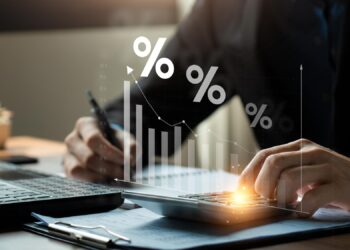The Centre for Investment Education (CIE) recently held its annual chief investment officer symposium. The aim of the symposium was not to dwell on the past, but to consider the future.
One important factor in this debate was the current CIO mindset.
To gauge their thinking, CIE posed a number of questions. The answers were nothing if not interesting.
On three questions there was almost unanimity of opinion.
Ninety per cent of CIOs said they had clarity of purpose with their chief executive and chair. On whether there was clarity of purpose with their investment committees, 90 per cent were again in the affirmative. In the same vein, 80 per cent believed their investment choices were aligned with the interests of their members.
But on specific investment issues, opinions were wide ranging. Take their predictions for where the Australian dollar/US dollar exchange rate will be at 31 December 2010.
A small minority, at 6 per cent, saw it at parity or above; 28 per cent said between 90 and 99 US cents; 47 per cent said between 80 and 89 US cents; and, at the other end of spectrum, 19 per cent predicted it to be between 70 and 79 US cents. No-one expected the dollar to fall below 70 US cents.
On the question relating to whether another currency or commodity was likely to replace the US dollar as the global currency, 46 per cent were confident the greenback would retain its pre-eminent position. The responses on what might replace it were intriguing: 9 per cent plumped for the euro, 9 per cent for the renminbi, 8 per cent had us back to gold, while 29 per cent plumped for a basket of currencies.
The responses to how the US and European economies would recover was interesting. With respect to the US, opinion was roughly split between a U-shaped recovery (43 per cent), a W-shaped recovery (34 per cent) and an L-shaped recovery (23 per cent). Across the Atlantic, 53 per cent believed it would be an L-shaped recovery, with 35 per cent and 12 per cent plumping for a U-shaped recovery and a W-shaped recovery, respectively.
In recent months, a new acronym has entered our lexicon – PIIGS. It stands for the (troubled) economies of Portugal, Ireland, Italy, Greece and Spain. Their troubles, it seems, are troubling our CIOs.
Nearly half (44 per cent) believed their problems would have a significant impact on the eurozone countries, while a sizeable minority (31 per cent) thought there would be a ripple effect globally. But 25 per cent were sanguine about any flow-on effects from the PIIGS.
It seems US debt still has its attractions. Asked whether it would keep its allure if China continued selling, 61 per cent said yes and only 19 per cent said no. The remainder didn’t venture an opinion. So too does the Chinese economy, with 79 per cent believing its growth story was sustainable over the next five years and only 9 per cent answering in the negative.
Questions relating to asset allocation also elicited interesting responses. On increasing their allocation to international equities, only 7 per cent answered in the affirmative; 52 per cent were firmly in the no camp, while 41 per cent were yet to reach a decision.
Hedge funds, it seems, still have some work ahead of them to get themselves back on the CIOs’ radars. Only 5 per cent of CIOs had more than 10 per cent in this asset class, 14 per cent had between 6-10 per cent allocated, 50 per cent had between 1-5 per cent and a sizeable 32 per cent had no exposure. In terms of increasing their allocation to hedge funds over the next year, 60 per cent were firmly in the negative, while only 20 per cent would do so.
For 58 per cent of CIOs, the global financial crisis had not influenced their decision on whether to have a passive or active allocation in this asset class. However, 29 per cent were increasing their active position, while 13 per cent were tending more towards passive.
A similar percentage applies to emerging market equities, with 54 per cent signalling a change, however, 21 per cent would aim to increase their exposure over the next 12 months and another 17 per cent planned to do so in the next 24 months. Emerging market debt, however, is not attracting much interest – 83 per cent were sitting pat.
That CIOs are offering such a diverse range of thoughts on these questions is hardly surprising. It is hard to remember a time when there has been less certainty about what is happening in the markets – a situation unlikely to change in the short term. Right now, for CIOs, that old Chinese proverb, “may you live in interesting times”, seems very apt.







